I watched mesmerised as the red gems, mixed in with the sand, glinted in the sunlight as they flowed through my fingers with every handful that I let slowly fall back into the riverbed. I’m a sucker for a 4WD adventure that involves finding gemstones, but sadly, this find will have to remain where it is, as fossicking is not allowed here at Ruby Gap Nature Park.
I’m sitting in the river bed of the semi-dry Hale River in Central Australia’s East MacDonnell Ranges, my feet in the water and the kids splashing about nearby. Our camp is around 50 metres away, higher up on the riverbed, with spectacular views of the high gorge walls that line the sides of the river. Hubby is walking over with a drink, adding his footprints to the lone dingo tracks in the sand, and ours that followed after. The dingo is nowhere to be seen; however, he makes his presence known at night, howling at the waning moon high over the gorge walls.
There are no marked campsites here and no facilities, but you can camp anywhere that takes your fancy between the park entrance and Ruby Gap. You used to be able to drop a small fee in the donation box upon arrival, but these days, you must plan your visit and book online in advance. Sounds easy, but in the absence of Starlink, it’s near impossible outside of Alice Springs, 150 kilometres away, due to the lack of signal.
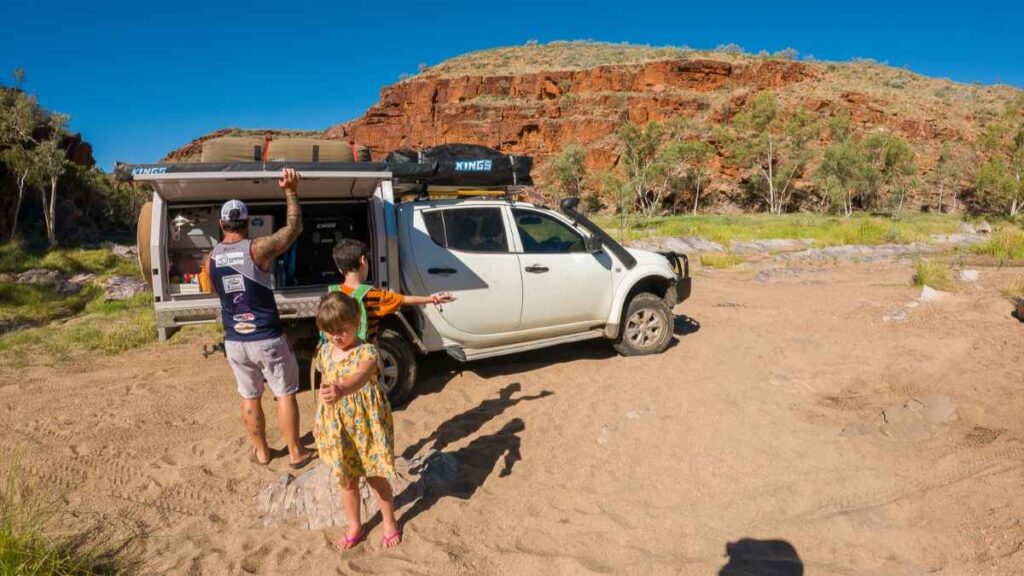
Earlier that day…
Earlier that day, we rolled the windows down and with smiles on our faces, listened to our vehicles’ tyres squelch through the dry sand. As we crossed to the other side of the riverbed, a herd of cows that had no interest in moving blocked our way.
We played rock, paper, scissors to decide whose job it was to move them on. I lost. Sighing, I got out and started flapping my arms about and yelling. I figured if I didn’t move too far from the car, I could just flop to the ground and roll under it out of harm’s way if one of them looked like it might head butt me. Fortunately, they moved on, albeit slowly and with a bit of attitude. I got back in the car and gave my husband a look that said many things without words, some of them curses. The kids laughed, re-enacting my arm flapping, which was apparently amusing.
The going was slow as the terrain varied between soft sand, rocky sections and waterholes. Our 4WD scored a new battle scar, a decent-sized dent in the step board. The kids squealed at Dad to go through the water again. They seemed to think that the snorkel meant the car could actually fully submerge, and were more than a little disappointed when I explained that it couldn’t.
“What’s the use of it then?” my son grumbled.
Are they rubies or garnets?
Given that we are travelling on our own and are yet to see another set of warm bodies, we decide to backtrack lest we get stuck here for days with no help in sight. It wasn’t too long before the perfect campsite was found. On the bank of the Hale River, we were overlooking the semi-dry river bed. There is more sand than water, but the water that is here is crystal clear and fresh, and we spent most of the time here picking little red garnets out of the sand and washing them off in the water.
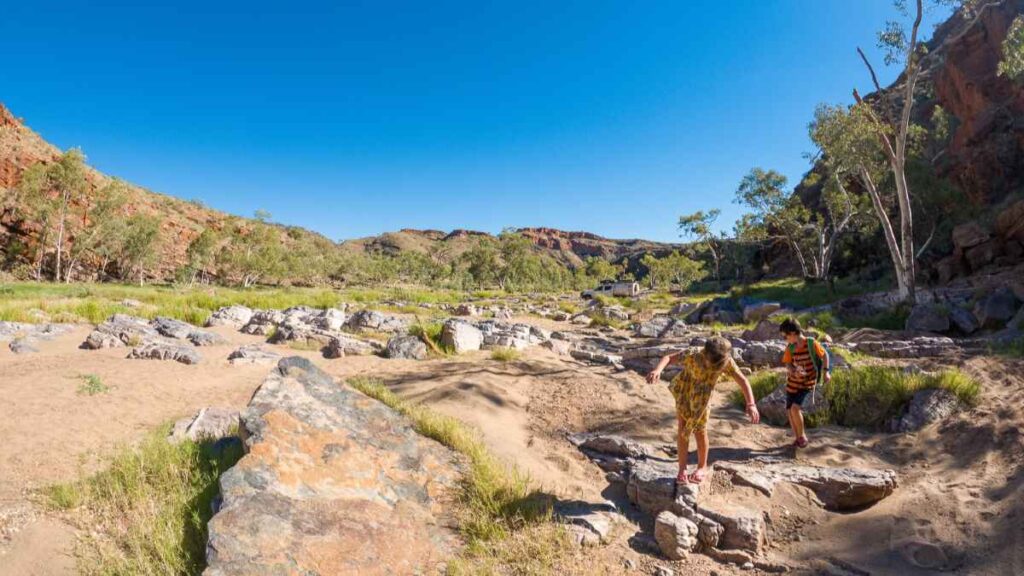
Why is it called Ruby Gap if I’m actually finding garnets? Well, when the pretty gemstones were discovered in the late 1880s by David Lindsay, he mistakenly identified these red garnets as rubies. As a result, hundreds flocked to the site to cash in on European buyers. 18 months later, when it was discovered they were actually high-grade garnets and not nearly as lucrative as rubies, the novelty quickly wore off and the fossickers moved on.
Today, it’s a remote camping spot with a striking landscape, and while the region is known for this misguided mining rush, it has a much longer and deeper significance in its formation. A formation which involved the powerful forces of nature over hundreds of millions of years… and we can’t forget its tens of thousands (at least) years of human habitation by the Arrernte people.
Ruby Gap Nature Park is everything you’d want in a remote campsite…
Nighttime was nothing short of spectacular. The night sky in Central Australia, with no light pollution, has to be seen to be believed. The sun goes down behind the gorge wall long before it sets, casting us in shadow from around 4 pm. When it rose, we awoke to a glowing red, the walls transformed by the morning rays.
Ruby Gap Nature Park is everything you’d want in a remote campsite and a bit more, but much of the rugged terrain is not be underestimated. If you don’t have a high-clearance 4WD and you’re not 100% self-sufficient with your camping set-up – forget it. Also forget it if rain is forecast, lest you want to be trapped either in the Hale River or on the wrong side of it with no way out for weeks.
Rubies and Garnets aren’t the only glittering objects that attracted attention here, though. There’s an utterly fascinating gold rush history in the East MacDonnell Ranges and you can learn all about it at Arltunga Historical Reserve on the way to Ruby’s Gap.
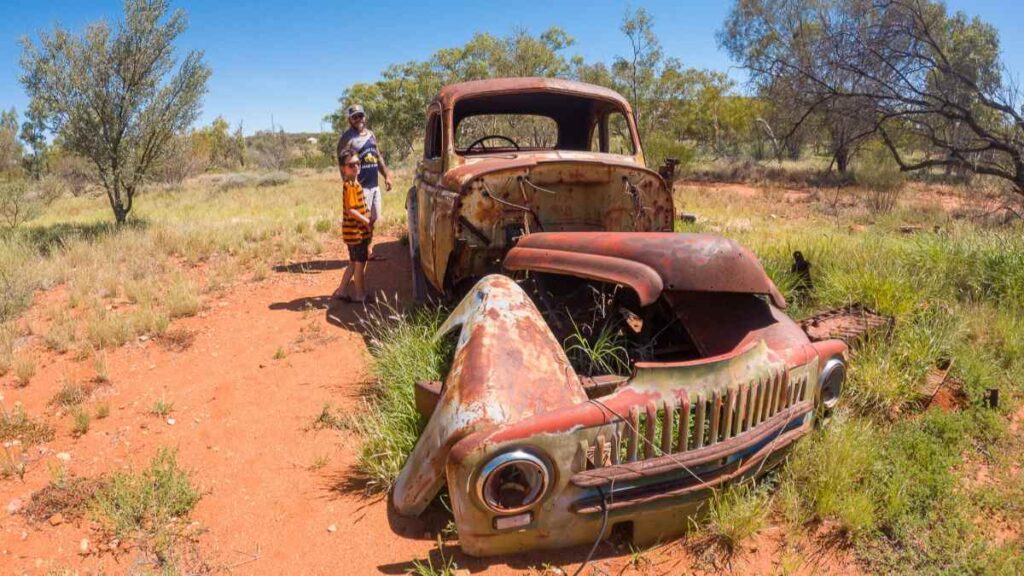
As we packed up camp and bumped our way back along the riverbed en route to Hale River Homestead for a late lunch, and then Gemtree as our next official stop (that’s a story for another day), I couldn’t shake the feeling that Ruby Gap had given us more than a few days away from it all. It was a reminder of how small we are against the forces of nature, how much history hides in the dirt beneath our feet, and how good it feels to let the kids run wild in a place where the only soundtrack is their squeals of laughter echoing off the gorge walls – or that dingo howling at night.
Need to know before you go to Ruby Gap
Ruby Gap isn’t the easiest place to get to, and that’s exactly why it’s worth it. The garnets glitter, the history whispers if you listen closely, and the gorge wall glow with every sunrise. If you’ve got the wheels, the gear and the guts …. go. Just don’t expect to come home without a few new dents on your 4WD and a head full of stories you’ll be telling for years to come.
Permits
This park requires non-NT residents to have a parks pass before entering. Passes for a family of 2 adults and up to 4 children are currently $25 for a day pass, $75 for a 2-week pass, or $150 for an open pass that lasts 12 months.
A camping permit is also required, which you can get >>here<<. You must do this before you go, while you have internet reception, and it cannot be obtained onsite. Annoying, I know.
What you’ll need
You need a high-clearance 4WD here; it’s not just an over-cautious suggestion. You’ll be driving over a semi-dry riverbed, which includes soft sand and large boulders. The track between Altunga and the entrance to Ruby Gap also requires a high-clearance 4WD and is quite slow going with plenty of wash outs.
You’ll need to be 100% self-sufficient with your camping setup as this is a remote site with zero facilities.
Weather and best time to visit
The road can be closed after heavy rain, and if it rains heavily while you are there, it’s time to pack up and leave, as flash flooding is common. The best time to visit is between April and September, during the cooler months.
How to get to Ruby Gap
Don’t trust Google Maps for this one. Follow the Binns Track and signs to Arltunga Historical Reserve 150km east from Alice Springs and you’ll find some more signage pointing you in the right direction from there.
Where to next?
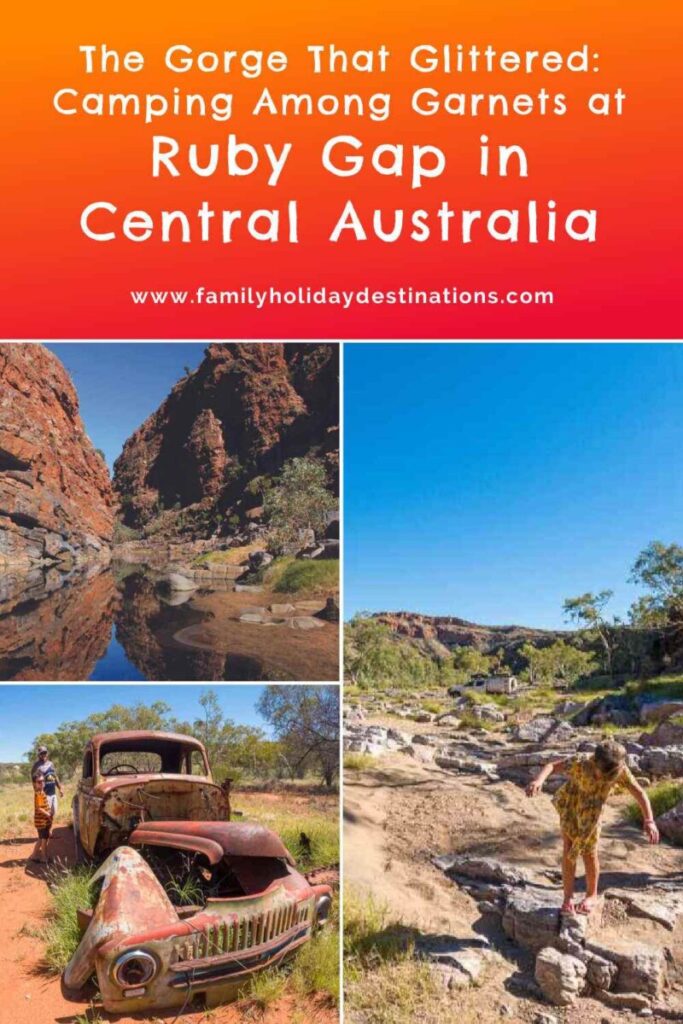
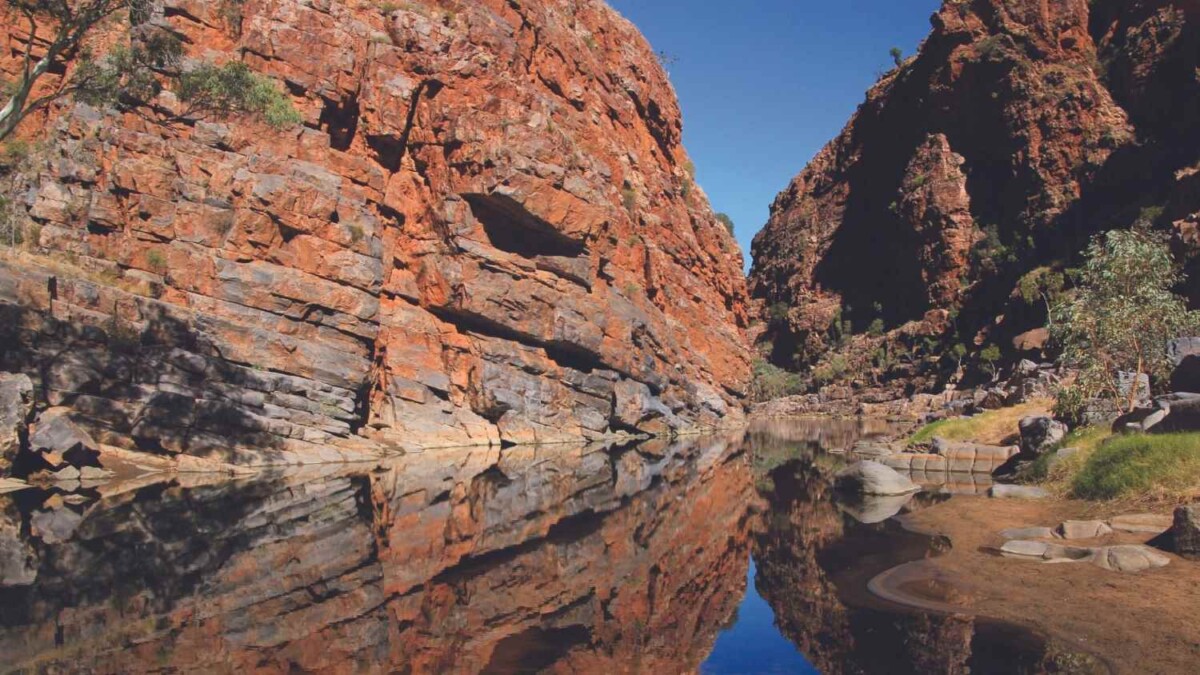
Let me know what you think!